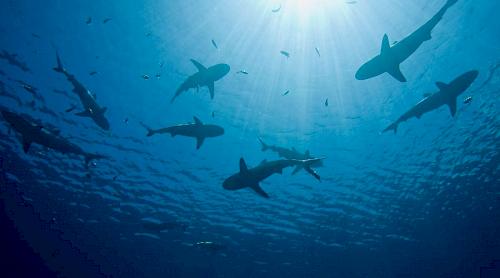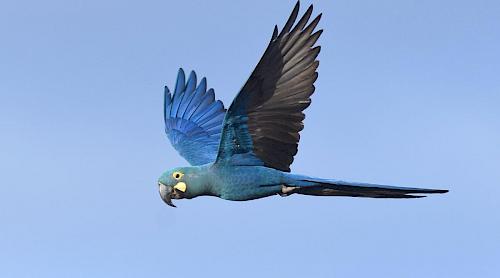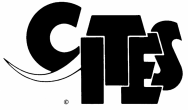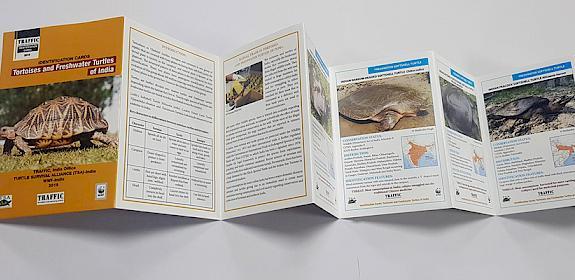How is CITES sharpening its teeth for better compliance to stop illegal wild species trade?
Following the 77th meeting of the CITES Standing Committee (SC77), an unusual number of countries are suddenly facing the stark prospect of not being able to internationally trade in CITES-listed species until they step up their game. What does this mean, and how can Parties safeguard these species while ensuring legal and sustainable trade?
The Convention on International Trade in Endangered Species of Wild Fauna and Flora endeavours to be “supportive and non-adversarial” in helping Parties meet their commitments to ensure that long-term international commercial trade can support national economies, people and, ultimately, does not threaten species’ survival.
But, sometimes, that requires a sharp decision to suspend trade if countries are consistently not implementing CITES provisions – this is where trade restrictions under Article XIII of the Convention text come in.
Where previous Standing Committee meetings would see Article XIII matters on the agenda for only a small handful of countries, at SC77, we saw almost 20 countries as being either identified for compliance measures under Article XIII or emerging as potential compliance matters.”
Sabri Zain, Director of Policy
What is CITES Article XIII?“Triggering Article XIII is considered a serious indication of apparent systemic or structural problems with the implementation and enforcement of the Convention.” In other words, Article XIII is triggered when a Party consistently or continually fails to keep up with their commitments to specific species CITES rules. There may be many reasons behind specific cases for triggering Article XIII, but law enforcement capacity and the Parties’ ability to effectively monitor are often mentioned. An action plan is usually put in place to remedy the situation before the next Standing Committee meeting. If the Party does not meet the action plan goals, it can result in an economic punishment - suspending commercial trade-in specimens of one or more CITES-listed species from the country. The recommendation to suspend trade is always the last resort and only takes place when a Party’s compliance matter is persistently unresolved, and the Party is showing no intention to achieve compliance. However, if a Party is making progress towards its obligations, the recommendation to suspend commercial trade may be put on hold to allow them time to make more progress before the next Standing Committee. |
How can Parties get back on track after new and existing suspensions?
At SC77, it was acknowledged that great progress has been made on the implementation of the CITES Compliance Assistance Programme (CAP), which aims to provide targeted support to Parties facing persistent compliance challenges. However, the continued success of the programme depends on further funding support.
Compliance measures are usually supported by an action plan to get a Party back on track and ensure progress is made towards removing any restrictions. These action plans will include remedial strategies and tools, including:
 Compliance backed up by scientific findings
Compliance backed up by scientific findings
Updates were given on trade in Malagasy palisanders, ebony, and rosewood since the 66th meeting of the CITES Standing Committee imposed trade restrictions in 2016. A report by the Parties still raised concerns over decade-long issues with managing stockpiles in the country. The Committee recommended that Madagascar re-convene the Consultative Advisory Group established after CoP18, with the specific task of resolving problems related to those stockpiles.
Similar to this, Nigeria’s trade suspension on CITES Appendix II-listed Pterocarpus erinaceus, also called Kosso, will continue until they can verify the sustainability of the harvest and scientifically prove that the levels of trade are not detrimental to the species' survival known as Non-Detriment Findings (NDFs).’
We encourage any Party needing to understand NDF for rosewood species and their implementation to make use of this information and to closely follow the outcomes of the international expert workshop that's taken place in Nairobi this week.”
Paola Mosig Reidl, Co-Lead of Data, Research, and Enforcement Support
But worryingly, as the illegal trade of this species has ballooned to the surrounding countries of Cameroon, the Central African Republic, Chad, the Gambia, Guinea-Bissau, Mali and Togo, these Parties now also face fast-tracked trade suspensions until, on top of NDFs, they can consistently prove the legal source of these species for export, called ‘Legal Acquisition Findings (LAFs).’
TRAFFIC’s Paola Mosig Reidl made an intervention highlighting the ongoing collaboration between the CITES Secretariat and TRAFFIC, compiling the available information about rosewood species to provide the essential elements for developing NDFs in alignment with CITES provisions and considering available guidance such as the 9-step process for developing scientifically-based NDFs for CITES-listed timber species, jointly developed by BfN and TRAFFIC.
Adoption of State based systems and Traceability
 After a bumper-listing of shark species to the CITES Appendices at the 19th Conference of the Parties (COP19), unsurprisingly, there were many discussions on shark trade compliance.
After a bumper-listing of shark species to the CITES Appendices at the 19th Conference of the Parties (COP19), unsurprisingly, there were many discussions on shark trade compliance.
Ecuador and the Galapagos islands' waters are known to be home to a wide variety of shark species. Yet, the illegal trade in sharks between Ecuador and its neighbour Peru is an issue the country still needs to get a handle on. As this problem has persisted, unless Ecuador takes drastic measures to ensure the appropriate implementation of Article IV focused on NDFs and LAFs within the 120 days after SC77, Ecuador will be subject to Article XIII compliance measures prohibiting its international trade.
TRAFFIC recommends that Ecuador, Peru, and other Parties consider adopting or adapting state-based systems to monitor these complex multi-state supply chains. TRAFFIC also expresses its willingness to explore with any Party how to undertake such work while also offering to help introduce the traceability system TRAFFIC has developed called SharkTrace.
Getting to grips with Captive Breeding rules
A big question mark still follows what is meant by ‘breeding for conservation purposes’ and how this is managed raised debates during the meeting. Several compliance matters on the SC77 agenda tried to deal with the complicated issue of species bred in captivity. It included Parties alleged to have been involved in the trade of live CITES-listed animals with questionable captive-bred status or have facilities not registered with CITES yet still trading.

The Bloc-Party European Union also suggested a lack of clarity on the definition of "commercial" and "non-commercial." This hampered their ability to prove that the trade of captive-bred CITES Appendix I species was legally traded from non-CITES registered facilities for non-commercial reasons. Parties urged that CITES rules must be the same for everyone. Hence, a majority vote decided that the EU and the UK must implement the Convention concerning captive breeding facilities more effectively. Parties will reject any permits or certificates to import Appendix-I animal species for commercial purposes from captive breeding facilities not registered with CITES.
TRAFFIC will participate in the Standing Committee Working Group tasked to review the texts of ‘Registration of operations that breed Appendix-I animal species in captivity for commercial purposes’ Resolution Conf. 12.10 (Rev. CoP15) to make sure no further misinterpretation occurs.
The issue of captive breeding facilities was also discussed as the agenda item on Asian big cats. Captive breeding of big cats and its links to illegal trade has been an ongoing issue of contention, receiving lots of attention at COP19 and closely monitored by TRAFFIC’s Skin and Bones report.
Since COP19, the reports back from CITES missions in Southeast Asian countries with captive breeding facilities for big cats reignited the questions surrounding ‘breeding for conservation purposes.’ TRAFFIC and other NGOs support a better definition, suggesting that only established, science-based population management programs, such as those following IUCN Guidelines on the Use of Ex-Situ Management for Species Conservation, can be listed as ‘breeding for conservation purposes.’
Enforcement
Not only is keeping up with commitments key to CITES but so is making sure Parties continue to strengthen their enforcement of rules. These were discussed, with the Committee stressing the importance of combating corruption and encouraging Parties to integrate financial crime investigations into wildlife-related crimes. TRAFFIC has several examples and trainings available to help Parties further their understanding in these areas.
TRAFFIC is here to support
These are examples that came out of the latest Standing Committee meeting. TRAFFIC continually monitors, advises and, with partners, creates tools to aid Parties in creating legal, sustainable and safe trade in wild species, also aligning with the UN’s Convention on Biological Diversity’s Kunming-Montreal Global Biodiversity Framework.
“From Day One, a core principle of TRAFFIC is to monitor the international trade of threatened species on CITES Appendices. As we delve into the intricacies of wild species trade with our partners, we’ve been able to become evidence-based advisors at these meetings and assist Parties in developing methods to keep their commitments with CITES to help protect these species,” says Sabri Zain.
Convention on International Trade in Endangered Species of Wild Fauna and Flora (CITES)

The Convention on International Trade in Endangered Species of Wild Fauna and Flora, is an international agreement between governments that aims to ensure that international trade in specimens of wild animals and plants does not threaten their survival. Find out more here.




